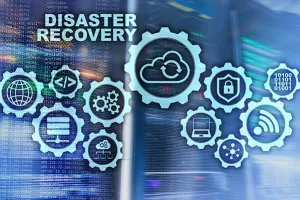Small to medium-sized businesses find themselves in a tough position when it comes to backup and disaster recovery (BDR). They know how painful it is to lose productivity to downtime. They understand how critical data is to their business. But few have the experience or knowledge to put effective BDR measures in place. Businesses like these often turn to managed service providers (MSPs) to help them safeguard their IT systems. That leaves decision-makers with an important question: What’s my criteria for choosing someone? What makes an MSP a worthy choice for your BDR solutions? Here are some critical qualities to look for in your solution provider.  If your discussion with an MSP doesn’t include recovery objectives, you might be barking up the wrong tree. Savvy solution providers know that before they can implement the right solution they must set goals. A recovery time objective (RTO) relates to how much downtime you can stand. If systems are offline, how long can you wait before it’s too expensive to bear? A recovery point objective (RPO) relates to how much data you can stand to lose. If you suffer from hardware failure and haven’t taken a backup for a day, can you afford to lose a day’s worth of data? If you find an MSP that can meet these objectives, you can be more certain you’ll end up with an effective BDR solution.
If your discussion with an MSP doesn’t include recovery objectives, you might be barking up the wrong tree. Savvy solution providers know that before they can implement the right solution they must set goals. A recovery time objective (RTO) relates to how much downtime you can stand. If systems are offline, how long can you wait before it’s too expensive to bear? A recovery point objective (RPO) relates to how much data you can stand to lose. If you suffer from hardware failure and haven’t taken a backup for a day, can you afford to lose a day’s worth of data? If you find an MSP that can meet these objectives, you can be more certain you’ll end up with an effective BDR solution.
1. A Focus on Recovery Objectives

2. Flexible BDR Options
MSPs that care about recovery objectives will likely offer a solution that gives you the most bang for your buck. Backup and disaster recovery isn’t a one-size-fits-all thing. The MSPs that you evaluate should have a list of tiered options, including one that fits your situation. Some might even provide customized solutions for each client. But, if you get the impression that an MSP implements the same solution for every client—regardless of that client’s unique needs—you might not be talking to a BDR expert, and you probably won’t get the solution you need.3. Proactive Management and Testing
For some MSPs, BDR just means setting up backups. But this “set it and forget it” approach doesn’t work for BDR because backups sometimes fail. When backups fail, your objectives can’t be realized. Top-tier MSPs often provide proactive management. That means they’ll actively monitor backups (and typically your entire network) to make sure everything is on schedule. Periodically they’ll also test these backups to make sure they’re actually viable for recovery. So when something goes wrong they already know they can get you up and running.4. Right-Sized Service Agreements
A service level agreement (SLA) outlines the services your MSP will provide. It should cover how and when they provide regular support. It should also address their approach to IT emergencies such as a hardware issue or large failure event. An SLA might also include agreed-upon recovery objectives. In rarer cases you may find MSPs that will guarantee a minimum percentage of network uptime. Whatever the case, these agreements should be written with your company’s objectives in mind. Look carefully at the language in an SLA so you can be sure you’re getting the protection you need and a contract that ensures that’s the case.Finding an MSP
The attributes we’ve described are important if you’re going to find an effective BDR solution provider. But remember that most MSPs offer a wide range of services so consider your other IT needs. Do you need antivirus and firewalls to keep out ransomware? Could your network be more efficient if it were hosted in the cloud? MSPs are a great way to keep your systems at peak performance. They can help keep cybercriminals out and they can help you quickly recover if the time ever comes. Take the time to research MSPs carefully. By making the right choice you’ll gain a valuable long-term business partner. As a starting point you’ll find a complete list of authorized StorageCraft MSP partners here.You May Also Like
- Backup and Disaster Recovery Business Continuity Cybersecurity Data Protection Data Resilience Ransomware
How Ransomware Works and What Your Company Can Do About It Today
April 18th, 2024 - Backup and Disaster Recovery Business Continuity Data Resilience
How to Build Business Resilience: A Comprehensive Guide for Today’s Enterprises
April 16th, 2024 - Backup and Disaster Recovery Data Storage
Primary Storage vs Secondary Storage: What's the Difference?
April 9th, 2024